Cornetti in general
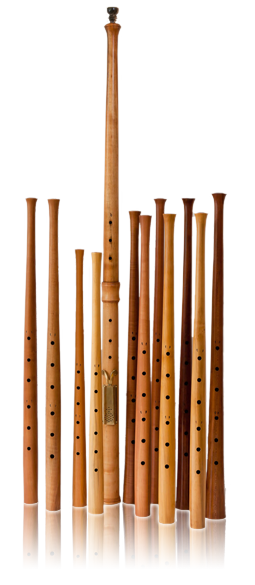 I played my first Monteverdi Vespers in 1980 and since that time the cornetto has been my main instrument. When building cornetti I rely heavily on my playing experience but use museum instruments as references for all models. An analysis of the acoustical properties by way of impedance measurement shows identical results for the originals and my copies (see: Günther Ziegenhals Zwota: originals and copies of Freiberg straight cornetti and Leipzig mute cornetti).
I played my first Monteverdi Vespers in 1980 and since that time the cornetto has been my main instrument. When building cornetti I rely heavily on my playing experience but use museum instruments as references for all models. An analysis of the acoustical properties by way of impedance measurement shows identical results for the originals and my copies (see: Günther Ziegenhals Zwota: originals and copies of Freiberg straight cornetti and Leipzig mute cornetti).
Problems of a direct (1:1) copy
There are some problems which can occur when making a direct copy, where a correction may be necessary:
1. Inhomogeneous shrinkage of the wood
Original woodwind instruments are very often seen to be too narrow at the top of the instrument. This is the part of the instrument where the walls are thickest and it can therefore shrink more than the rest of the instrument. It is also exposed to the most moisture. I correct these effects mainly for the sake of achieving precise octaves.
2. Diversity of original pitches
For practical reasons I build my instruments in the common pitches of a'= 480, 465, 460, 440, 415 Hz. Wherever possible I always look for an original that differs no more than a semitone from the desired pitch.
3. Scales
On many original instruments of the 16th and 17th centuries the note with fingering th 100 000 and th 123 400 are very low, even for a mean tone temperament. This can be rectified without changing the design of the particular instrument.
4. Materials
Original straight and mute cornetti are generally made from maple or boxwood. Maple can be replaced by a denser timber such as plum wood or almond. Boxwood in the dimensions used for mute cornetti can be hard to find or very expensive; but it can be substituted by white beam, true service or plum wood.
More detailed information can be found in due course in an article by myself on straight cornetti in "Michaelsteiner Konferenzberichte 2009". Publication in preparation.
Berlin 662
This instrument comes from a set of instruments owned by the Naumburg town musician Andreas Unger and dates (according to the Berlin museum) from the 17th century. Jamie Savan argues convincingly that this is a late specimen of a long tradition of German cornetto making. In this he is referring to the period when German cornetto playing really flourished at the beginning of the 16th century, with famous names like Augustein Schubinger. This cornetto comes from a set of wind instruments which is dominated by double reed instruments and is in perfect balance with them.
in a'= 465, 460, 440 Hz
- maple, fruitwood
- boxwood
Freiberg
The design of the straight cornetti found in Freiberg Cathedral is very much related to the above Berlin model. They constitute part of the angels concert in the funeral chapel of the Freiberg cathedral and were made in 1593. The instruments play one note higher than a normal cornetto and have a sound which matches very well with other wind instruments, especially double reeds. This could well be the instrument referred to in the inventory of Maria of Hungary as "cornetas accordatas con las chirimias". It has a range of more than two octaves.
The originals have a fingering scale, whereby the first overblown note is an octave and the range between is filled with a fingering like on flutes or shawms. I also make a version with standard cornetto fingering.
in a'= 465, 460, 440 Hz
- maple, fruitwood
- boxwood
Nürnberg MI 121
This instrument was probably originally a mute cornetto from the Bassano workshops. It has been cut down in the 17th century and a trumpet knob dating from the 17th century (according to the expertise of Markus Raquet) has been fitted to reinforce the top part of the instrument. The original plays at a'= 480 Hz and has a fingering similar to the Freiberg instrument.
I make also a version with standard cornetto fingering.
in a'= 480, 465, 460, 440 Hz
- plum, almond, trumpet knob
- boxwood, trumpet knob
Honthorst
With the exception of the final instrument, which was initially not a straight cornetto, we have no straight cornetti from the 17th century in museum collections. On Gerrit Honthorst’s painting "The old singer" (Schwerin, Staatliches Museum) we can clearly see a straight cornetto in the foreground . The nice shape of the instrument and the fact that we have a clear indication of the existence of a 17th century straight cornetto inspired me to reconstruct an instrument similar to this. As acoustic base I took Nürnberg MI 121 which was, apparently, used in the 17th century.
A very flexible instrument with playing characteristics like an Italian cornetto.
in a'= 465, 460, 440 Hz
- plum wood, true service wood
Nürnberg MIR 33
A very elegant instrument from the south of Germany. The acoustics and the external shape clearly show that there was further development in cornetto making in the 18th century. An appropriate instrument for the music of Bach, Reiche and Gluck.
in a'= 465, 460 Hz
- boxwood, buffalo horn
Hoe 1765
The instrument is more robustly made than the former one. The wood in the bore is badly macerated and the finger holes clearly show traces of frequent use. This could well be an instrument used by the Stuttgart or Meißen town musicians who played on cornetto and three sackbuts well into the 19th century.
A direct copy plays at a'= 450 Hz. With a few changes an instrument at a'= 440 Hz can be made. Further pitches are also possible.
in a'= 450, 440 Hz
- boxwood buffalo horn
Hetsch 1840
This instrument was made in the year when French musicologist and composer George Kastner visited Stuttgart and listened to the town musicians playing on cornett and sackbuts. The instrument has a very fine, flute like sound and a key for c sharp. A direct copy plays at a'= 450 Hz, scaled down versions are also possible.
in a'= 450, 440 Hz
- boxwood, buffalo horn, brass key
Straight alto/tenor cornett MI92
This instrument is classified in the museum catalogue as a badly restored alto shawm. The analysis of x rays and the exterior shape however, show that the instrument has been adapted by two makers. I suspect that this was a mute cornett blank which has been transformed into a longer instrument which plays with one key as a d tenor in a'= 465 Hz.
If an instrument in a'= 440 Hz is desired I would recommend transposing it up to an f-instrument.
in a'= 465, 460, 440 Hz
- maple, brass key
For the prices of the instruments please consider the current price list.

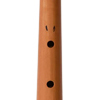
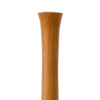
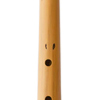
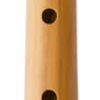
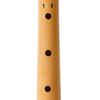
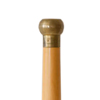
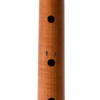
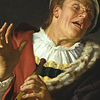
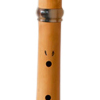
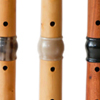
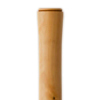
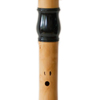
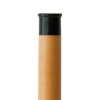
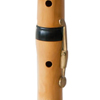
 Change language
Change language Deutsch
Deutsch Français
Français